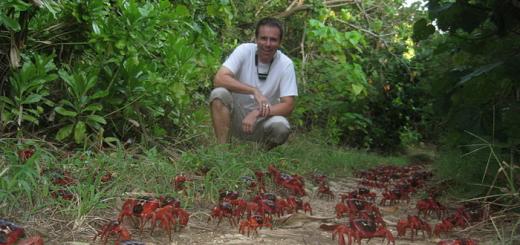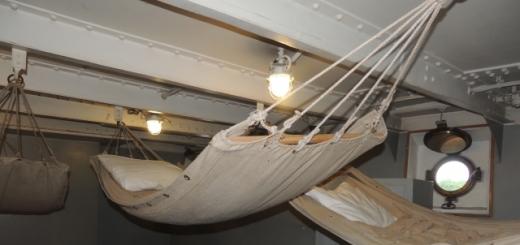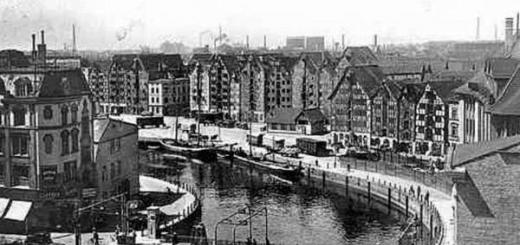The area of the territory is 589,200 km², which is 3.5% of the entire territory of the Russian Federation.
The administrative center of the SFD is Rostov-on-Don
The Southern Federal District includes 13 constituent entities of the Russian Federation, including:
8 republics:
2. Dagestan
3. Ingushetia
4. Kalmykia
5. Kabardino-Balkaria
6. Karachay-Cherkessia
8. North Ossetia
1. Stavropol
2. Krasnodar
3 areas
1. Volgograd
2. Astrakhan
Among the 132 cities, the largest are:
Astrakhan
Vladikavkaz
Volgograd
Volzhsky
Krasnodar
Makhachkala
Nazran
Nalchik
Novorossiysk
Rostov-on-Don
Stavropol
Taganrog
According to the All-Russian population census of 2002, there are 22,835,216 people in the Southern Federal District, which is 16.08% of the total population of the Russian Federation. The Southern Federal District occupies a leading position in terms of the number of rural population. This is the most multinational region of the country. About 30 nationalities live in Dagestan alone. In total, there are more than 100 nationalities in the district.
The region has great natural resources. The bowels of the Southern Federal District contain up to 73% of Russian thermal waters, about 41% of tungsten-molybdenum ores (Kabardino-Balkaria and Karachay-Cherkessia), over 30% of mineral water reserves. The Southern Federal District ranks first in Russia in the production of mineral waters, second in the production of tungsten raw materials, and third in the production of cement. Non-ferrous and rare metals are also represented by deposits of lead-zinc ores (North Ossetia), copper (Karachay-Cherkessia) and mercury (North Ossetia and Krasnodar Territory). The Volgograd region is rich in magnesium, potassium, sodium salts, phosphorites. The Southern Federal District has large reserves of raw materials for the production of building materials: Novorossiysk cement marls, quartz sandstones, refractory clays, chalk, granites, marble in the Teberda region. Among non-metallic minerals: sulfur, barite and rock salt, which occurs in the largest deposit in Russia - in the lakes Elton and Baskunchak.
One of the main prospects for the development of the region is the fuel and energy resources of the Southern Federal District (oil, natural gas, coal). The Volgograd and Astrakhan regions, the Krasnodar Territory, Ingushetia and the Chechen Republic have a great potential for hydrocarbon raw materials. The largest gas field is located in the Astrakhan region. Almost all coal resources are located in the Rostov region (eastern part of Donbass). But, despite the presence of large ones, the share of the Southern Federal District in the volume of oil refining is low - 7.6%.
The Southern Federal District is one of the most important suppliers of agricultural products (grain). The main grain crop is wheat grown in the open spaces of the Stavropol Territory. In addition, the cultivation of corn and rice is widespread. Industrial crops are grown on the territory of the region: sugar beet, mustard, sunflower, tobacco. All vineyards in Russia are located in the Southern Federal District, and fruit and berry plantations in the region - over 30% of Russian volumes.
Food industry enterprises are successfully operating in the region: meat and fish, sugar and oil and fat, flour and cereals, fruit and vegetable canning and others. Among the most famous are the fishery concern "Kaspryba" of the Astrakhan region, "Abrau-Durso" - a factory of sparkling wines.
Astrakhan region: JSC "Astrakhan machine-tool plant" (lathes), "AMZ AKMA" (forging and pressing machines), "Shipbuilding plant" Lotus ", JSC" Shipbuilding plant "Red Barricades", JSC "Shipbuilding and Ship Repair Plant named after. III International”, OJSC “Astrakhan shipbuilder”;
Stavropol Territory - "Trailer-Kamaz" (trailers);
Kabardino-Balkarian Republic - OJSC "Machine Tool" (woodworking machines);
Republic of Dagestan - Dagdiesel Plant JSC (diesels and electric diesels);
The industrial enterprises of the Southern Federal District also produce products of the military-industrial complex. The military-industrial complex of the Southern Federal District consists of 90 enterprises that produce amphibious aircraft and basic helicopters for the army, repair various types of aircraft and armored vehicles. In the Southern Federal District, the production of units for ground equipment of the Iskander-E and Topol-M missile systems (PA Barrikady), as well as the launcher of the Shtil ship anti-aircraft missile system, has been launched. In addition, oil refineries produce fuel for ballistic missiles. The Akhtuba plant produces echolocation devices, the Volgograd Tractor Plant produces an airborne combat vehicle (including its latest modification BMD-4), the Meteor enterprise produces an element base for the radio-electronic industry, ICT (Volzhsky) produces measuring instruments for the radio-electronic industry .
In terms of production, the leaders are the Volgograd and Rostov regions, as well as Dagestan. More than 50% of the region's defense industry enterprises operate on the Don. It should be noted that the development of production in the defense industry stimulates the development of metallurgy, transport, and civil engineering in the Southern Federal District.
The Southern Federal District is an administrative formation in the south of the European part of Russia. It was formed by the Decree of the President of the Russian Federation of May 13, 2000. In the west, the district has land and water borders with Ukraine, in the east - with Kazakhstan. In the south it borders on Abkhazia and the North Caucasian Federal District. In the north - with the Central and Volga federal districts. In the east, the federal district is bounded by the Caspian Sea, in the west - by the Sea of Azov and the Black Sea. The Southern Federal District occupies 2.4% of the territory of Russia. The center of the Southern Federal District is the city of Rostov-on-Don. There are 79 cities on the territory of the Southern Federal District. The largest cities are represented: Rostov-on-Don, Volgograd, Krasnodar, Astrakhan, Sochi, Volzhsky, Taganrog, Mines, Novorossiysk.
Rostov-on-Don
Archaeological studies date the first settlements on the territory of modern Rostov-on-Don to the third millennium BC. The first written references to this area, the tract and the Bogatyi Kolodez spring, date back to the time of the Azov campaign (1695-1696) of Peter I. The city of Rostov-on-Don is a large industrial center in southern Russia. Main industries: mechanical engineering, food industry, production of electrical equipment, electronic and optical equipment, vehicles, textile and clothing production. The Rostov-on-Don City Duma consists of 35 deputies, whose term of office is 5 years. The City Duma is chaired by the Chairman. The city administration is headed by the highest official of the municipality - the mayor of the city of Rostov-on-Don.
Volgograd
The Rostov-on-Don City Duma consists of 35 deputies, whose term of office is 5 years. The City Duma is chaired by the Chairman. The city administration is headed by the highest official of the municipality - the mayor of the city of Rostov-on-Don. The city of Volgograd is the administrative center of the urban district "Hero City Volgograd". The city of Volgograd is a large industrial center. Leading industries: mechanical engineering and metalworking, ferrous and non-ferrous metallurgy, fuel, chemical and petrochemical industries, military-industrial complex.
Population of the Southern Federal District
The total population of the Southern Federal District is about 14 million people, which is 9.7% of the population of Russia. Population density - 33.37 people / km 2. The urban population is 63% of people. Unfortunately, the county is dominated by such an indicator as mortality. The average life expectancy is 70 years.
National composition of the district:
- Russians 11,602,458 people (83.75%)
- · Armenians 442 505 people. (3.19%)
- · Persons who did not indicate their nationality 240,609 people. (1.74%)
- Ukrainians 212,674 people (1.53%)
- Kazakhs 205,364 people (1.48%)
- Kalmyks 172,242 people (1.24%)
- Tatars 127,455 people (0.92%)
- Circassians 121,461 people (0.87%)
- · Representatives of other nationalities 729,572 people. (5.26%)
In total, the population density in the district is 33.37 people / km 2. The most densely populated administrative unit is the Rostov region. This is due to the fact that every year the migration increase increases. Less densely populated is the Republic of Kalmykia. Kalmykia occupies a very large territory with a small population, which is why the density indicators are so low.
Natural resources
Significant reserves of thermal and mineral waters, tungsten, coal, oil on the shelf of the Caspian Sea are concentrated on the territory of the Southern Federal District and in its subsoil. The climate is sharply continental - summers are hot and very dry, winters have little snow, sometimes with great cold. The continentality of the climate increases significantly from west to east. Average January temperatures throughout the country are negative: from -7°C/-9°C in the southern and southwestern parts of it to -10°C/-12°C in the north, the minimum January temperature is -37°C. The lowest temperatures sometimes reach -35°C and below in the northern regions. A feature of the climate is a significant duration of solar activity; sunny days in the district 182--186 per year. The duration of the warm period is 240-275 days. Average July temperatures are +23.5°C / +25.5°C. The absolute maximum temperature in hot years reaches +45°C.
The water resources of the Southern District are the waters of the rivers of the basins of the Black, Azov and Caspian Seas and groundwater. In the east flows the largest river in Europe - the Volga. Of the other large rivers, the Don, Kuban, Terek, Sulak should be noted. Although water resources are significant, they are unevenly distributed over the territory. The foothills and the Azov-Black Sea plain have a dense river network, and the southeastern and Caspian regions are poor in water. Particularly noteworthy are the largest salt deposits in the Russian Federation in the lakes Baskunchak (Astrakhan region) and Elton (Volgograd region).
Minerals. The bowels of the Southern Federal District have been studied quite well. About 73% of all-Russian reserves of thermal waters (carriers of deep, "natural" heat), almost 41% of tungsten reserves and about 30% of mineral water reserves are concentrated here. There are reserves of coal, gas, oil (Volgograd and Astrakhan regions), sulfur, cement raw materials, copper, zinc, gold, silver and lead, mercury (Krasnodar Territory). Today, the region ranks first in Russia in the production of mineral waters, second and third in the production of tungsten and cement raw materials. In terms of coal production (Donbass), the district is in third place after the Siberian and Far Eastern regions. But the main prospects for the economic development of the region are connected precisely with the extraction and production of "black gold". Oil reserves lying at depths of 5 to 6 kilometers are estimated at 5 billion tons of reference fuel. The drilling of the first exploratory well on the Caspian shelf immediately confirmed the serious "fuel" potential of this area. However, all projects require a lot of money: about 15-20 billion dollars.
Industry
One of the main prospects for the development of the region is the fuel and energy resources of the Southern Federal District (oil, natural gas, coal). The Volgograd and Astrakhan regions, the Krasnodar Territory, Ingushetia and the Chechen Republic have a great potential for hydrocarbon raw materials. The largest gas field is located in the Astrakhan region. Almost all coal resources are located in the Rostov region (eastern part of Donbass).
But, despite the presence of large oil refineries, the share of the Southern Federal District in the volume of oil refining is low - 7.6%. Light industry is widely developed, represented by clothing, knitwear and textile factories. Enterprises of agricultural, construction, railway engineering work in the Southern Federal District.
There is aircraft and shipbuilding, the automotive industry, machine tool building and electronics production. Basically, engineering enterprises are concentrated in Krasnodar, Rostov, Astrakhan and Volgograd.
According to experts, the enterprises of these cities have a high potential for the development and production of high quality products. The industrial enterprises of the Southern Federal District also produce products of the military-industrial complex. The military-industrial complex of the Southern Federal District consists of 90 enterprises that produce amphibious aircraft and basic helicopters for the army, repair various types of aircraft and armored vehicles. It should be noted that the development of production in the defense industry stimulates the development of metallurgy, transport, and civil engineering in the Southern Federal District.
Agriculture
The economy of the Southern Federal District plays its role in Russia. The share of the Southern Federal District in the all-Russian production of agricultural products is high. There are quite objective economic reasons for this - good climatic conditions for the development of agriculture. For several years in a row, a high grain harvest has been harvested in the district, the production of meat, milk, eggs has increased, a positive trend is visible in the production of sunflower seeds and sugar beets. Productive agriculture, which specializes in the cultivation of grain and industrial crops, sheep breeding and meat and dairy farming.
In terms of the share of the rural population, the Southern Federal District occupies a leading position in Russia. The Southern Federal District is the most important supplier of grain, mainly wheat. Crops of corn and rice are also widespread. The importance of the region as a producer of industrial crops - sunflower, sugar beet, mustard, tobacco is great. On the territory of the south of Russia there is more than a third of all fruit and berry plantations and all the vineyards of the Russian Federation are located. Subtropical crops are also grown in the region: tea, citrus fruits, persimmons, figs (on the Black Sea coast of the Krasnodar Territory).
On the territory of the Okrug, such industries as the production of flax, rapeseed, and hops are actively developing. Traditional rural crafts and crafts for the manufacture of products from wool and down are being revived, the production of new crops is mastered: soybeans, triticale, fodder beans.
A distinctive feature of agriculture is its seasonality, which makes it dependent on natural conditions, leads to an uneven use of labor during the year and an uneven flow of products and cash income.
Power industry
There are more than 10 large power plants in the Southern Federal District. But we will talk about the Rostov NPP. Rostov (Volgodonsk) nuclear power plant - located in the Rostov region of Russia, 12 km from the city of Volgodonsk on the banks of the Tsimlyansk reservoir. The electric capacity of the two operating power units is 2000 MW. From 2001 to 2010, the station was called "Volgodonsk NPP", with the launch of the second power unit, the station was again renamed "Rostov NPP"
Rostov NPP is one of the largest energy enterprises in the South of Russia, providing about 15% of the annual electricity generation in this region. Electricity from the Rostov NPP is transmitted to consumers via five 500 kV transmission lines to Shakhty (Rostov Region), Tikhoretsk (Krasnodar Territory), Nevinnomyssk, Budennovsk (Stavropol Territory) and Yuzhnaya (Volgograd Region).
Prospects for the development of the Southern Federal District
Prospects for the economic development of the Southern Federal District are determined by the following factors:
- Realization of competitive advantages in the agrarian sector of the Southern Federal District, formation of a powerful agro-industrial cluster in the district, attraction of large producers, development of technologies, genetics and selection, which will allow the Southern Federal District to become the main supplier in the Russian Federation to the domestic and foreign markets of a wide range of agricultural products (plant growing, livestock, fisheries and fish farming);
- · Gradual development of tourism and recreation: stimulation of the most famous brands of health, ski and seaside resorts, followed by the expansion of state infrastructure investments in new resort centers; increasing the capacity of transport communications to ensure passenger flows to tourism development zones; the formation of new special tourist zones in the regions of the Southern Federal District;
- · Modernization of production and technological breakthrough in mechanical engineering and metallurgy of the Southern Federal District: development of clusters of agricultural, energy, transport engineering; implementation of a number of innovative projects, including the creation of an integrated production of technological components for solar energy in the Rostov region and other regions;
- · Diversification of the Okrug's economy through the development of high-tech processing industries in the chemical complex, including petrochemicals, construction materials, pharmaceuticals and biotechnologies;
- · Implementation of projects for the development of oil and gas production on the Caspian shelf; development of Black Sea hydrocarbon resources; construction of the export gas pipeline "South Stream" through the territory and water area of the Southern Federal District;
- · Creation of an effective regional innovation system, including a scientific and innovation complex, a federal university, a number of innovation zones and clusters; the transformation of an outsider macro-region, in terms of innovation, into a base area for Russia of a technical and technological breakthrough in the field of agro-industrial complex, energy, recreation, and logistics;
- · Implementation of the transport and transit advantages of the Southern Federal District through the formation of a number of transport and logistics complexes of international and interregional significance;
- · Intensive growth of the district's service sector, based on the development of modern high-tech types of services, as well as the development of financial and insurance services; creating conditions for the development of clusters of financial, business and educational services, scientific developments and applied research, high-tech industries, including information technology in the interconnected agglomerations of Rostov-on-Don, Krasnodar, Volgograd;
- · Implementation of a system of high-tech projects for the development of transport routes and transport hubs (clusters-multimodal centers) in the Volgograd, Astrakhan and Rostov regions; the development of transshipment port complexes that are part of the system of international transport corridors of the Azov-Black Sea and Caspian basins;
- · Formation on the basis of large agglomerations of the Southern Federal District (Rostov, Volgograd and Krasnodar) of trade, transport, logistics and financial centers of national and interregional significance.
After analyzing the main branches of economic development, we can safely say that the Southern Federal District is one of the leaders among other districts that are part of the Russian Federation. A huge amount of natural resources allows not only to develop the district itself, but also the state as a whole. The presence of rich lands and a favorable climate makes it possible to provide excellent agricultural products. It is hard not to notice the growth potential of the economy and economy of the Southern Federal District.
The Southern Federal District is one of the components of the Russian Federation, if I may say so. It is interesting that for some time (to be more precise, from 05/13/2000 to 06/21/2000) it was called the North Caucasian Federal District. But, as you can see, it did not last long - a little more than a month. Then, however, on January 19, 2010, the North Caucasian Federal District was separated from the Southern Federal District. But this is a slightly different topic.
general information
The Southern Federal District is the smallest in all of Russia. Its area is 447,821 sq.m. - this is only 2.61% of less than the notorious North Caucasian Federal District (170,439 km²). For comparison, the Siberian Federal District has an area of 5,145,000 km². Although it consists of only 12 subjects. But the Krasnoyarsk Territory alone occupies 2,366,797 km².
So, the Southern Federal District includes 8 subjects. And its population is 16,367,949 people, according to the latest statistics. This is about 11.17%. The average density is low - 36.5 people per square kilometer. The center of the Federal District, by the way, is the city of Rostov-on-Don.

Compound
What cities the SFD includes should be noted with special attention. The Southern Federal District has a small composition. As mentioned above, only 8 subjects.
The smallest in terms of area is the Hero City of Sevastopol. Total 864 km². It is home to about 420,000 people. This city is good for many, but the most important thing is that it is in it that the main naval base of the Black Sea Fleet of the Russian Navy is located.
The Republic of Adygea, supposedly located inside the Krasnodar Territory, has an area of 7,800 km². The peculiarity of this region is its forest resources. They occupy more than 1/3 of the entire republic. Also, there are a lot of minerals here.
The Crimea is not large either - about 27,000 km². But here it is more than twice as superior. Its area is 49,024 km². rich in deserts used as pastures. serves as a spawning ground for beluga, stellate sturgeon and sturgeon.
The next in area is the republic of which Elista is. Interestingly, in this region, the official language is not only Russian. But also Kalmyk (at the legislative level).
And the largest three regions are the Krasnodar Territory, the Rostov Region and the Volgograd Region.

Economy
The Southern Federal District annually attracts tens of thousands of tourists. Because it includes the Krasnodar Territory and the Crimea. And these are regions rich in resorts. Sochi, Tuapse, Gelendzhik, Anapa, Sevastopol, Yalta - for the economy of these cities (and, accordingly, the entire district), the most profitable time is the end of spring, summer and the beginning of autumn. Such is the specificity of the climate, it was at this time in the resort areas of the Southern Federal District that there was no end to visitors.
But, in addition to the tourism industry, the agro-industrial and transport complexes, as well as trade, are still well developed here. True, this is not the case in the entire region. Transport complexes of interregional and international importance, for example, are concentrated in the Astrakhan region and the notorious Krasnodar Territory.
Percentage of production
But these are not all industries that the Southern Federal District can boast of. The cities of this federal district are good objects for the development of light industry. It really is here, and it is oriented towards the supply of products to other federal districts of Russia. It is on the territory of this district that 1/10 of all knitwear in our country and about 28% of shoes are produced.
But that's not all. Also, the Southern Federal District, the map of which is provided above, is the region of the country that produces about 21% of the total Russian volume of steel pipes, 13% of metal-cutting machines, about 19% of tractors, 7% of cars and 9% of excavators.
In addition, the Southern Federal District produces approximately 18% of cement, 10% of prefabricated reinforced concrete structures and 15% of building bricks.

Addition
If you look at the Southern Federal District (map provided above), you can see that it also includes the Republic of Crimea and the hero city of Sevastopol. Back in March 2014, these subjects returned to the Russian Federation. But their territorial status was approved quite recently - in the middle of the summer of the current 2016.
After the inclusion of Crimea in the Southern Federal District, the district increased by 27,000 km². The population also increased - approximately 2,300,000 people. By the way, it is precisely because of the situation that occurred in November 2015, associated with the explosion of power transmission lines in Kherson, that the Southern Federal District is called an energy-deficient region. Since this incident deprived the entire Crimea (a large part of the district) of electricity completely. But, as you know, if everything is bad in one place, and good in another, then all the same, the indicators are summed up. That's why the Southern Federal District is now scarce and is considered.

Agro-industrial complex
The center of the Southern Federal District, like all its other regions, boasts favorable natural and climatic conditions. In other federal districts, they are different, and are not so conducive to the development of the agricultural industry. And this is the main significance of the South for our entire vast country. It is the Southern Federal District, whose composition is not very large, that provides Russia with food security. It is here that almost 1/6 of the sown area of the whole country is concentrated. And they grow more than a quarter (!) of the total Russian volume of grain crops, 50% of sunflower seeds, and about 1/5 of vegetables.
On average, 1/7 of all agricultural products are produced in the Southern Federal District. And this is a lot. This also includes 33% sugar, 46% vegetable oil, about 11% dairy products and eggs, about 12.5% meat products. In general, the list can be long, but the fact that the Southern Federal District is very important for Russia is unambiguous and undeniable.
This is a service ... Wikipedia
- ... Wikipedia
List of small (up to 50 thousand inhabitants) and medium (50,100 thousand inhabitants) cities of the Southern Federal District. Contents 1 Republic 1.1 Adygea 1.2 Dagestan ... Wikipedia
According to the results of the 2010 All-Russian Population Census, among 1,100 cities in Russia, 37 cities had a population of more than 500 thousand inhabitants, including: 2 cities of a multimillionaire (Moscow, St. Petersburg) more than 2 million inhabitants, 12 cities ... ... Wikipedia
Cities of the 2018 FIFA World Cup: Rostov-on-Don- Rostov-on-Don has been selected as one of the Russian cities that will host matches of the 2018 FIFA World Cup. Rostov on Don is the administrative center of the Rostov Region and the Southern Federal District of Russia, political, ... ... Encyclopedia of Newsmakers
They were created in accordance with the Decree of the President of Russia V.V. Putin No. 849 “On the Plenipotentiary Representative of the President of the Russian Federation in the Federal District” dated May 13, 2000 .. Federal districts are not subjects of ... ... Wikipedia
It exists since 1999, is the organizer of the most popular and large-scale children's and youth football tournaments in Russia and the CIS. Tournaments are held during the winter, spring and autumn school holidays on the basis of the main partner of the League ... ... Wikipedia
House of the Government of Moscow The Government of Moscow (formerly the City Hall) is the highest executive body in the city of Moscow, headed by the Mayor of Moscow. Acts on the basis of the Charter of the city of Moscow and the Law of the city of Moscow dated December 20, 2006 No. 65 “On ... ... Wikipedia
This term has other meanings, see Rostov (meanings). The city of Rostov-on-Don Flag Coat of arms ... Wikipedia
The city of Volgodonsk Flag Coat of arms ... Wikipedia










